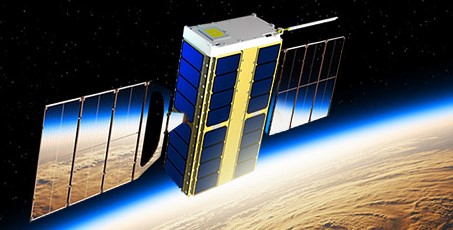Much of the talk about the budget was around Finance Minister, Mthuli Ncube’s announcement of setting aside resources for the launch of a space satellite. Many people blasted the government for committing resources to launch a satellite yet we have more pressing problems that need to be addressed. In light of that, I set out to find out how much it will probably cost the government to launch a space satellite and see if it can be used to solve just a few of the problems we are currently facing.
Cost of developing and launching a satellite
Conventional satellites differ prices depending on their size and their uses as well. An average weather satellite can cost somewhere around US $290 million according to Globalcom. Spy satellites can even cost close to US $400 million. These are the expensive types of satellites many deep-pocketed countries launch. But African countries have their own type of satellites they are sending to space called Nanosatellites which are much more affordable. Last year Kenya launched the Cubesat satellite, so did Ghana and Nigeria in 2017.
The development and launch of Kenya’s nanosatellite cost US $1 million- though it was entirely funded by Japan. And Ghana’s nanosatellite cost US $ 500 000. I suspect that a Nanosatellite is the type of satellite Zimbabwe’s government wants to launch as it can be used to do pretty much everything that the government wants a satellite for. The government wants to use the space satellite for:
- Mineral discovery
- Agriculture monitoring
- Satellite navigation
- Earth observation
Can US $1 million solve some of our pressing problems?
The government hasn’t yet disclosed what kind of satellite they want to launch but for argument’s sake, let’s say Zimbabwe wants to launch a nanosatellite that cost US $1 million. As I pointed out above, much of the backlash against the Finance Minister’s announcement stemmed from the fact that the money for satellite launch could be used to solve other pressing problems like mending roads, paying doctors’ salaries, provide clean water, import more electricity and so forth. In other words, people were saying the money should be channeled to the abovementioned areas.
But my question is, “Does US $1 million solve any of those problems”? Let’s take a look at just 4 of the problems the government hasn’t solved:
- Doctors’ salaries: Doctors are demanding a basic salary that is in the region of US $1100. So if the US$ 1 million is used to pay doctors, it will only cover the salaries of 909 doctors yet there are 1 620 in government’s employ. That means US $1 million will only pay just over half of the doctors for just one month.
- Radiotherapy: Last month 8 radiotherapy machines at Parirenytwa Group of Hospitals hospital were lying idle because they had not been serviced. Servicing all the machines require just US $127 000. Apparently, the government can save people’s lives by diverting funds from launching a space satellite to servicing the radiotherapy machines. As for buying additional radiotherapy machines, US $1 million won’t be enough since the minimum purchase price of such a machine is US $3 million.
- Water-treatment chemicals: Harare City Council needs 3 million a month to deliver healthy water to the residence, therefore, US $1 million is not enough to solve this problem
- Clearing electricity debt: Zimbabwe is suffering from acute electricity shortages. And paying some of our debts to our neighbours will lessen the load-shedding. According to Pravin Gordhan, South Africa’s Public Enterprise Minister, Zimbabwe owes South Africa’s Eskom US $21 million. Again, the money that is supposed to go in launching space satellite is 20 times less than what’s required to pay off our electricity debt.
As you can see, there’s not much that US $1 million can do in solving many of the pressing problems that we are currently facing in Zimbabwe. But still, I don’t think it justifies channeling US $1 million to a space satellite when people are dying in hospitals and companies are failing to produce goods because of electricity goods shortages.
Yes, US $1 million is a lot of money but it’s not enough to solve many of our problems- it barely scratches the surface. But if for some inexplicable reason, the government decides to go for the US $200 million dollar space satellites, then I think that’s when we have to question the sanity of the government because the money will be enough to solve many problems that we are facing.
Is it that the benefits that will come in the future by having our own satellite far justify not channeling the money in repairing radiotherapy machines to save people’s lives today? We’ll talk about it in the next episode.


Comments
4 responses
First, we do a tender:
US $1 million will be for the feasibility study #WicknellStyle
US $5 million will to “supply” a nano-satellite
US $2 million to launch the satellite
Inodyiwa $8 million and you’ll spend 10 years asking when the satellite is going to be operational, without any answers.
Your final question is what we need answered for sure. Look forward to the next episode
Is this still a Tech blog or its now a political blog. Live politics alone and let us focus on Tech. it wil be better if you write about how much money was allocated to the ICT sector and maybe write an article about what a satellite is and whats its benefit and drawbacks if any. Techzim used to be great but nw it is otherwise.
Satellites are essential in today’s ICT landscape. Even Radiotherapy machines mentioned can be included in Technology field.